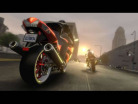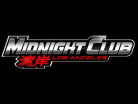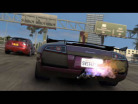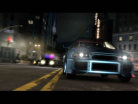- CLASSIC MAGAZINES
- REVIEW CREW
A show recapping what critics thought back
when classic games first came out! - NEXT GENERATION'S BEST & WORST
From the worst 1-star reviews to the best
5-stars can offer, this is Next Generation! - NINTENDO POWER (ARCHIVE)
Experience a variety of shows looking at the
often baffling history of Nintendo Power! - MAGAZINE RETROSPECTIVE
We're looking at the absolutely true history of
some of the most iconic game magazines ever! - SUPER PLAY'S TOP 600
The longest and most ambitious Super NES
countdown on the internet! - THEY SAID WHAT?
Debunking predictions and gossip found
in classic video game magazines! - NEXT GENERATION UNCOVERED
Cyril is back in this spin-off series, featuring the
cover critic review the art of Next Generation! - HARDCORE GAMER MAGAZING (PDF ISSUES)
Download all 36 issues of Hardcore Gamer
Magazine and relive the fun in PDF form!
- REVIEW CREW
- ELECTRONIC GAMING MONTHLY
- ELECTRONIC GAMING MONTHLY RANKS
From Mario to Sonic to Street Fighter, EGM
ranks classic game franchises and consoles! - ELECTRONIC GAMING MONTHLY BEST & WORST
Counting down EGM’s best and worst reviews
going year by year, from 1989 – 2009! - ELECTRONIC GAMING BEST & WORST AWARDS
11-part video series chronicling the ups and
downs of EGM’s Best & Worst Awards!
- ELECTRONIC GAMING MONTHLY RANKS
- GAME HISTORY
- GAME OVER: STORY BREAKDOWNS
Long-running series breaking down game
stories and analyzing their endings! - A BRIEF HISTORY OF GAMING w/ [NAME HERE]
Real history presented in a fun and pithy
format from a variety of game historians! - THE BLACK SHEEP
A series looking back at the black sheep
entries in popular game franchises! - INSTANT EXPERT
Everything you could possibly want to know
about a wide variety of gaming topics! - FREEZE FRAME
When something familiar happens in the games
industry, we're there to take a picture! - I'VE GOT YOUR NUMBER
Learn real video game history through a series
of number-themed episodes, starting at zero! - GREAT MOMENTS IN BAD ACTING
A joyous celebration of some of gaming's
absolute worst voice acting!
- GAME OVER: STORY BREAKDOWNS
- POPULAR SHOWS
- DG NEWS w/ LORNE RISELEY
Newsman Lorne Riseley hosts a regular
series looking at the hottest gaming news! - REVIEW REWIND
Cyril replays a game he reviewed 10+ years
ago to see if he got it right or wrong! - ON-RUNNING FEUDS
Defunct Games' longest-running show, with
editorials, observations and other fun oddities! - DEFUNCT GAMES QUIZ (ARCHIVE)
From online quizzes to game shows, we're
putting your video game knowledge to the test!- QUIZ: ONLINE PASS
Take a weekly quiz to see how well you know
the news and current gaming events! - QUIZ: KNOW THE GAME
One-on-one quiz show where contestants
find out if they actually know classic games! - QUIZ: THE LEADERBOARD
Can you guess the game based on the classic
review? Find out with The Leaderboard!
- QUIZ: ONLINE PASS
- DEFUNCT GAMES VS.
Cyril and the Defunct Games staff isn't afraid
to choose their favorite games and more! - CYRIL READS WORLDS OF POWER
Defunct Games recreates classic game
novelizations through the audio book format!
- DG NEWS w/ LORNE RISELEY
- COMEDY
- GAME EXPECTANCY
How long will your favorite hero live? We crunch
the numbers in this series about dying! - VIDEO GAME ADVICE
Famous game characters answer real personal
advice questions with a humorous slant! - FAKE GAMES: GUERILLA SCRAPBOOK
A long-running series about fake games and
the people who love them (covers included)! - WORST GAME EVER
A contest that attempts to create the worst
video game ever made, complete with covers! - LEVEL 1 STORIES
Literature based on the first stages of some
of your favorite classic video games! - THE COVER CRITIC
One of Defunct Games' earliest shows, Cover
Critic digs up some of the worst box art ever! - COMMERCIAL BREAK
Take a trip through some of the best and
worst video game advertisements of all time! - COMIC BOOK MODS
You've never seen comics like this before.
A curious mix of rewritten video game comics!
- GAME EXPECTANCY
- SERIES ARCHIVE
- NINTENDO SWITCH ONLINE ARCHIVE
A regularly-updated list of every Nintendo
Switch Online release, plus links to review! - PLAYSTATION PLUS CLASSIC ARCHIVE
A comprehensive list of every PlayStation
Plus classic release, including links! - RETRO-BIT PUBLISHING ARCHIVE
A regularly-updated list of every Retro-Bit
game released! - REVIEW MARATHONS w/ ADAM WALLACE
Join critic Adam Wallace as he takes us on a
classic review marathon with different themes!- DEFUNCT GAMES GOLF CLUB
Adam Wallace takes to the links to slice his way
through 72 classic golf game reviews! - 007 IN PIXELS
Adam Wallace takes on the world's greatest spy
as he reviews 15 weeks of James Bond games! - A SALUTE TO VAMPIRES
Adam Wallace is sinking his teeth into a series
covering Castlevania, BloodRayne and more! - CAPCOM'S CURSE
Adam Wallace is celebrating 13 days of Halloween
with a line-up of Capcom's scariest games! - THE FALL OF SUPERMAN
Adam Wallace is a man of steel for playing
some of the absolute worst Superman games! - THE 31 GAMES OF HALLOWEEN
Adam Wallace spends every day of October afraid
as he reviews some of the scariest games ever! - 12 WEEKS OF STAR TREK
Adam Wallace boldly goes where no critic has
gone before in this Star Trek marathon!
- DEFUNCT GAMES GOLF CLUB
- DAYS OF CHRISTMAS (ARCHIVE)
Annual holiday series with themed-episodes
that date all the way back to 2001!- 2015: 30 Ridiculous Retro Rumors
- 2014: 29 Magazines of Christmas
- 2013: 29 Questionable Power-Ups of Christmas
- 2012: 34 Theme Songs of Christmas
- 2011: 32 Game Endings of Christmas
- 2010: 31 Bonus Levels of Christmas
- 2009: 30 Genres of Christmas
- 2008: 29 Controls of Christmas
- 2007: 34 Cliches of Christmas
- 2006: 33 Consoles of Christmas
- 2005: 32 Articles of Christmas
- 2004: 31 Websites of Christmas
- 2003: 29 Issues of Christmas
- 2002: 28 Years of Christmas
- 2001: 33 Days of Christmas
- NINTENDO SWITCH ONLINE ARCHIVE
- REVIEW ARCHIVE
- FULL ARCHIVE
Midnight Club: Los Angeles
It's nice to see that the Midnight Club series is starting to be taken seriously. For years it felt like Rockstar's racing franchise was either overshadowed by the fame of Grand Theft Auto or passed over for racing games with bigger names. But these days it feels like everybody is starting to come around to Midnight Club's unique style of racing, especially now that some of the other major racing franchises (such as Burnout and Need For Speed) have opted for an open-world race course. As a fan from the get-go, it's about time everybody else starts to realize how much fun the Midnight Club series really is.
Midnight Club: Los Angeles marks the fourth installment in a series that started its life at the exact same time as the PlayStation 2. Not only is this the first Midnight Club game in three years, but it's also the first "next-generation" sequel to appear on the Xbox 360 (or PlayStation 3, for that matter). Now that everybody from Burnout to Need For Speed have decided that an open-world race course is the way to go, this brand new Midnight Club game has a lot to prove. Thankfully it lives up to the task ... for the most part.

Midnight Club: Los Angeles marks a surprising change for Rockstar's popular racing franchise. It's not that we're racing through a virtual L.A. (we've done that before in Midnight Club 2), but instead that for the first time ever players are locked to only one city. In the past we've had a chance to explore two or three cities throughout the course of the game, but not this time around. Instead the good people at Rockstar Dan Diego have decided to focus all their time and attention on making Los Angeles as fully realized as they can, and you tell while you're whipping through the streets at 100 miles per hour.
This fictional Los Angeles is a real marvel; it somehow manages to fit every landmark from both the city and all of the outlining cities. But as impressive as the city is, this is still your standard game of Midnight Club. The game has a forgettable storyline that is there only to introduce you to the world of street racing and give you missions. As you play through the single-player story mode you'll have to take part in various tournaments, perform some oddball challenges, earn enough cash to buy cars and parts, and earn enough respect to become the best street racer in Los Angeles. Chances are all this sounds familiar, because it's basically the same plot that we've had in every other Midnight Club game. The difference here is that you're not moving from city to city and the graphics are really, really good.
Everything that you loved about the past three Midnight Club games is front and center here, from the high speed races to the different types of races to the weird car super powers. Super powers? While not noticeable at first, it won't be long before you realize that your car has a secret. It's true; your car can perform all sorts of cool tricks, most of which will give you a significant advantage in your high speed race to the finish line. There are four different powers, including AGRO (the ability to plow right through the competition), ZONE (which slows everything down so that you can make precise corners), EMP (an electromagnetic pulse that disables the competition), and ROAR (which sends out an engine rev so loud that traffic will do anything it can to get out of your way). All of these different abilities add a lot to the game; however they don't overshadow the already strong racing mechanics.
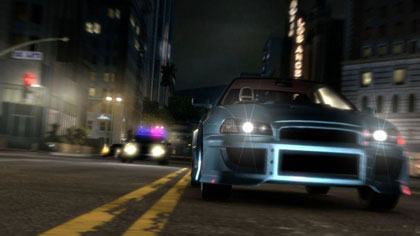
For the most part Midnight Club is set up like all street racing games; you basically drive around the city looking for different people to race. Beyond the standard tournaments and time trials, you'll run into random cars that are looking to beat you to the finish line. Thankfully there are a few different types of events, including time trials, checkpoint races around the city, freeway races, and races from point A to point B, all stuff you have come to know and expect from a street racing game. Throw in the police presence and lots and lots and lots of advertising and you have the makings of your basic open-world street racing game.
The criticism that has always been leveled against this type of racing game is that with so many different city streets (and hidden shortcuts) it's incredibly easy to get lost or accidentally make a wrong turn. Unfortunately this is still the Achilles ' heel of Midnight Club: Los Angeles. On one hand it's a double-edged sword; you want the city to be fully realized and full of intersecting streets and shortcuts, but the more complicated the city is the more overwhelming the experience can be when you're driving at breakneck speeds. It's hard enough to keep control of the car and dodge traffic without having to also look at the tiny map to make sure you didn't miss your turn.
Some recent open-world racing games have managed to find ways of getting around this impediment. Burnout Paradise, for example, featured a number of visual and audio cues to help you navigate through the city at full speed. This is not the case with Midnight Club, instead you're forced to pay attention to one of two different maps or try and memorize every street and intersection of Los Angeles, California.
This problem goes from bad to worse when you find out that your opponents are insanely difficult to beat. If you've played a racing game in the past twenty years you already know about "rubber band A.I.," the artificial intelligence that somehow allows the other racers catch back up no matter how far ahead you are. Unfortunately this is done to the nth degree in Midnight Club: Los Angeles. In truth you can never get too far ahead of the pack, by the time the finish line is in your sights you'll have the rest of the racers right on your tail. This can create some really tense finishes, which can be very exciting to play. However, at the same time it's a little too easy to accidentally mess up and not be able to recover in time. Worse yet, since every race is close at the end, this means that the only times you would use your limited power boosts is if you crash and need to regain speed or right at the finish line. The way the computer-controlled characters race is a real problem, it turns an otherwise fun experience into something incredibly frustrating.
The good news (if there is any) is that after awhile you stop noticing the game's unfair difficulty. After a few hours of play you'll start unlocking newer, faster cars and know the ins and outs of the city. By the time you buy your first motorcycle you will have all but forgotten the difficulty. Unfortunately you will be reminded of it here and there, but for the most part the hardest segments of the game are right up front. Even if the game does still have all of the AI problems late in the game, you will barely notice them when you're unlocking new vehicles and taking control of the races.

Contrary to the title, not all of the street racing happens at midnight. Instead this condensed version of Los Angeles has a standard day cycle, which includes the sunrise to the sunset and everything in between. Although you can race during the day, Midnight Club: Los Angeles feels a lot darker than what we had in Burnout Paradise. However, that may have more to do with the fact that at the time I reviewed Burnout Paradise there was no day/night cycle, but rather one sunny day locked in place. On top of the different night and day lighting, Midnight Club also features the occasional rain storm, which definitely looks cool and can affect your car's stability.
The graphics in Midnight Club: Los Angeles are good, although they are a little less polished than some of the visuals found in the competition. For those who have been to Los Angeles, there are plenty of cool real life surprises found around this virtual city. The overall graphics definitely fit the tone of Los Angeles, from the color to the landmarks. What's more, by including a lot of the outlining areas you are able to race through a lot of different looking environments. For example, it's always fun to go from the claustrophobic corridors of downtown L.A. to the sandy beaches of Santa Monica and then up to the long and windy hills of the Hollywood Hills. Even if we're not visiting far off parts of the world, the developers at Rockstar San Diego have done an excellent job of making each section of the map feel unique.
The one graphic flourish that seems to get everybody's attention is how seamless the transitions are, especially when it comes to switching from the large world map to the street level. Whenever you start a race or pause to view the larger map, the player is catapulted up way over the city of Los Angeles. It's not that it simply switches to an overhead view; it's the way it looks. When you go back to racing the camera falls down to street level in a way that allows you to see all of the surroundings and marvel at how amazing the city looks. This isn't something that necessarily changes the gameplay in any way, but it's hard not to be impressed with the transitions found in the game. Really, this is just one of the many examples of how impressive Midnight Club's graphical touches are.
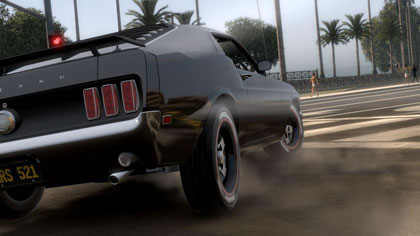
The game's audio is also good. It's more than just the game's lengthy soundtrack (which features a number of top 40 songs you'll instantly recognize); you also get a lot of good car sound effects. Generally speaking in racing games sound effects take a backseat to the visuals, but it's hard not to overlook how important they are to helping you feel like you're in a life or death race to the finish line. The voice acting is also strong, even though there's really no reason for there to be a storyline.
On top of the game's lengthy (and difficult) single-player story mode, you can also take the game online and play against fifteen other real people. I can't guarantee that your opponents online will be any easier than the computer-controlled racers offline, but at least it will be a level playing field. The best part comes when you realize that there are a number of modes that are downright bizarre to see in a racing game. I'm talking about modes such as Capture the Flag, Team Capture the Flag, Keepaway (get a flag then keep it away from all the other racers), Stockpile (whoever returns the most flags to his base wins), and more. And that's not all, you will also be able to play standard races, as well as customize your own races and try them out online. If you're a fan of fast-paced racing games and love to play online, then Midnight Club: Los Angeles has enough unique modes to keep you busy until Midnight Club 5 hits the shelves.
All in all this is a fun racing game. Unfortunately it's nowhere near the top of the racing heap this year, but it does have enough unique aspects to make it worth checking out if you're a fan of the genre. I definitely like the direction Rockstar Games is going with Midnight Club, I just hope that next time they rework the artificial intelligence and offer a more original single-player campaign. If you can overlook the game's steep learning curve then you're going to have a great time.
HOME |
CONTACT |
NOW HIRING |
WHAT IS DEFUNCT GAMES? |
NINTENDO SWITCH ONLINE |
RETRO-BIT PUBLISHING
Retro-Bit |
Switch Planet |
The Halcyon Show |
Same Name, Different Game |
Dragnix |
Press the Buttons
Game Zone Online | Hardcore Gamer | The Dreamcast Junkyard | Video Game Blogger
Dr Strife | Games For Lunch | Mondo Cool Cast | Boxed Pixels | Sega CD Universe | Gaming Trend
Game Zone Online | Hardcore Gamer | The Dreamcast Junkyard | Video Game Blogger
Dr Strife | Games For Lunch | Mondo Cool Cast | Boxed Pixels | Sega CD Universe | Gaming Trend
Copyright © 2001-2025 Defunct Games
All rights reserved. All trademarks are properties of their respective owners.
All rights reserved. All trademarks are properties of their respective owners.






